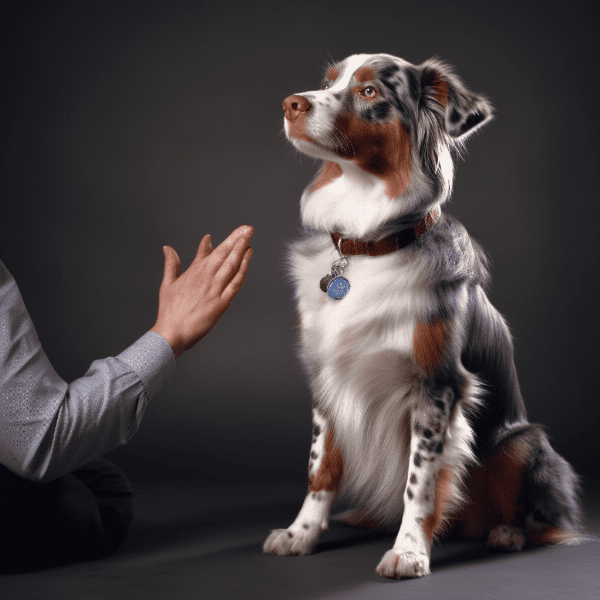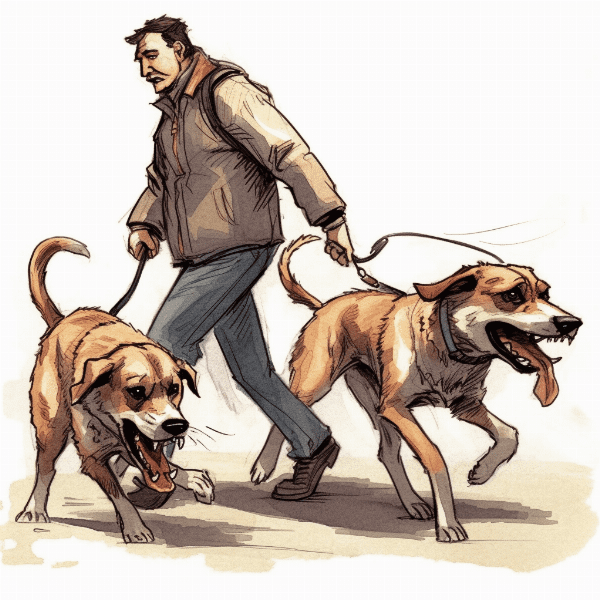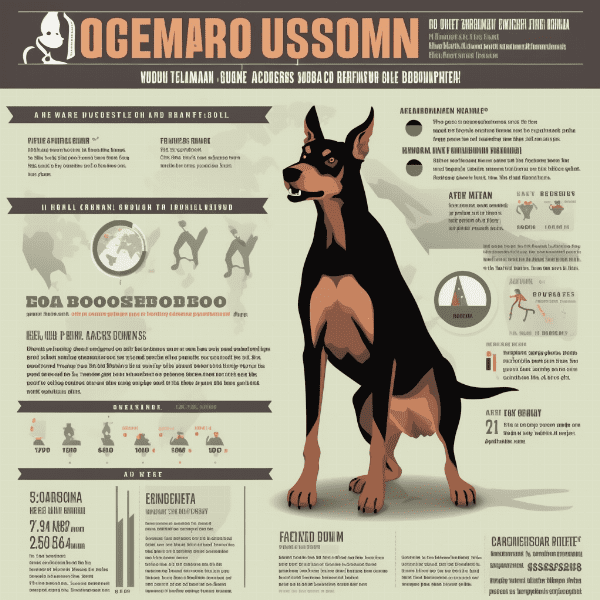Table of Contents
- Understanding the Causes of Aggression in Australian Shepherds
- Signs of Aggression in Australian Shepherds
- How to Manage Aggressive Behavior in Australian Shepherds
- Positive Reinforcement Training Techniques for Australian Shepherds
- Seeking Professional Help for Aggressive Australian Shepherds
- Socializing Australian Shepherds to Reduce Aggression
- Creating a Safe Environment for Aggressive Australian Shepherds
- Providing Adequate Exercise and Mental Stimulation for Australian Shepherds
- Preventing Aggression in Australian Shepherds through Early Training
- The Importance of Consistency in Dealing with Aggressive Australian Shepherds
Understanding the Causes of Aggression in Australian Shepherds
Aggression in Australian Shepherds is not uncommon, and can be caused by a variety of factors. Understanding the underlying causes of aggression in Australian Shepherds is an important step in managing and preventing this behavior.
Genetics
Genetics can play a role in the development of aggressive behavior in Australian Shepherds. Certain genetic factors can increase the likelihood of an Australian Shepherd displaying aggressive behavior, such as a lack of socialization or fearfulness.
Environmental Factors
Environmental factors can also contribute to aggressive behavior in Australian Shepherds. For example, if an Australian Shepherd has been exposed to trauma or abuse, they may be more likely to display aggressive behavior as a result. Additionally, if an Australian Shepherd has not been properly socialized, they may not know how to interact with other dogs or people, which can lead to aggression.
Medical Issues
Medical issues can also contribute to aggressive behavior in Australian Shepherds. For example, if an Australian Shepherd is in pain or discomfort, they may display aggression as a way to protect themselves. Additionally, certain medical conditions, such as hypothyroidism or brain tumors, can also lead to aggressive behavior.
Lack of Training
A lack of training can also contribute to aggressive behavior in Australian Shepherds. If an Australian Shepherd has not been properly trained to interact with people or other dogs, they may become aggressive as a way to assert their dominance or protect themselves.
Conclusion
In conclusion, aggression in Australian Shepherds can be caused by a variety of factors, including genetics, environmental factors, medical issues, and a lack of training. It is important to understand these underlying causes in order to effectively manage and prevent aggressive behavior in Australian Shepherds. By addressing the root cause of aggression and implementing proper training and socialization techniques, owners can help their Australian Shepherds live happy and healthy lives.
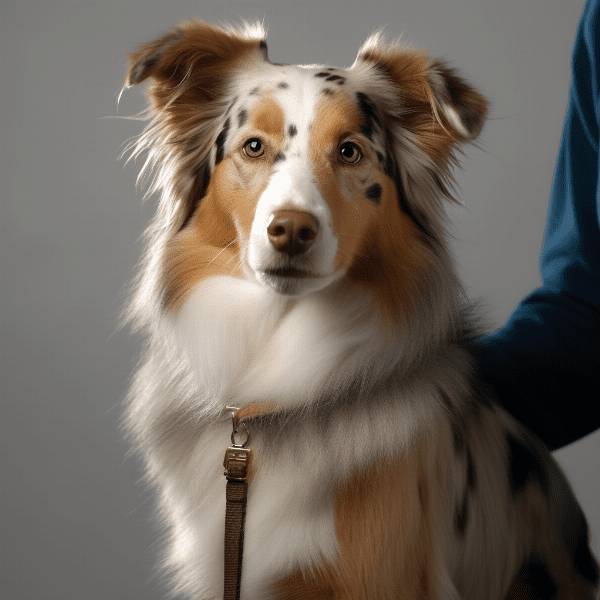
Signs of Aggression in Australian Shepherds
Recognizing the signs of aggression in Australian Shepherds is important for owners to be able to manage and prevent aggressive behavior in their pets.
Body Language
One of the most common signs of aggression in Australian Shepherds is their body language. When feeling threatened or aggressive, an Australian Shepherd may display certain physical cues, such as a stiff body posture, raised hackles, and a tense facial expression. They may also growl, bark, or snarl as a warning to others.
Aggressive Behaviors
In addition to body language, there are several aggressive behaviors that an Australian Shepherd may display. These can include biting, snapping, lunging, and even attacking. If an Australian Shepherd is displaying any of these behaviors, it is important to take immediate action to prevent any harm to people or other pets.
Triggering Situations
Certain situations can also trigger aggressive behavior in Australian Shepherds. For example, if an Australian Shepherd is approached by a stranger or another dog, they may become aggressive as a way to protect themselves. Additionally, if an Australian Shepherd feels threatened or cornered, they may also display aggressive behavior.
Early Warning Signs
It is important for owners to recognize the early warning signs of aggression in Australian Shepherds before the behavior escalates. These can include excessive barking, growling, and snapping, as well as avoiding eye contact or hiding behind furniture.
Conclusion
In conclusion, recognizing the signs of aggression in Australian Shepherds is important for owners to be able to manage and prevent aggressive behavior. By paying attention to their body language, aggressive behaviors, triggering situations, and early warning signs, owners can take the necessary steps to keep their Australian Shepherds and those around them safe.
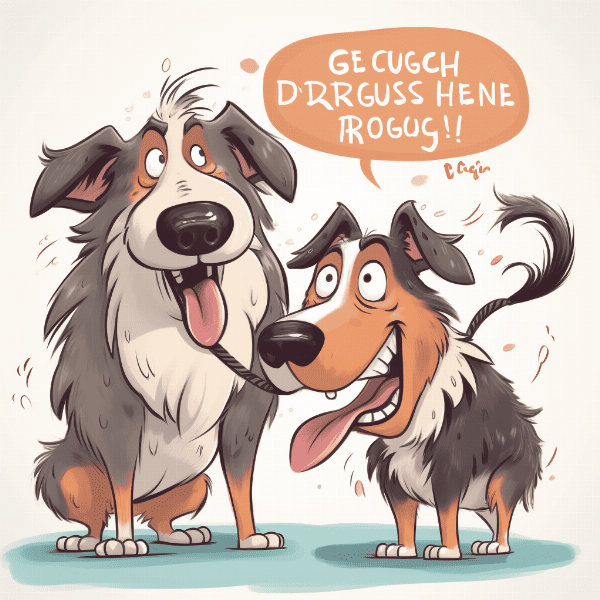
How to Manage Aggressive Behavior in Australian Shepherds
Managing aggressive behavior in Australian Shepherds can be challenging, but there are several steps that owners can take to help their pets.
Create a Safe Environment
Creating a safe environment for an Australian Shepherd can help to reduce their anxiety and prevent aggressive behavior. This could involve giving the dog their own space to retreat to, as well as removing any potential triggers from their environment.
Positive Reinforcement Training
Positive reinforcement training can be an effective way to manage aggressive behavior in Australian Shepherds. This involves rewarding good behavior with treats, praise, or other rewards, while ignoring or redirecting negative behavior.
Socialization
Socialization is an important aspect of managing aggressive behavior in Australian Shepherds. By exposing the dog to a variety of people, animals, and situations in a controlled environment, owners can help the dog learn to interact appropriately and reduce their anxiety and aggression.
Conclusion
In conclusion, managing aggressive behavior in Australian Shepherds requires patience, understanding, and a commitment to positive reinforcement training and socialization. By identifying triggers, creating a safe environment, providing positive reinforcement training, and seeking professional help when necessary, owners can help their Australian Shepherds live happy and healthy lives.
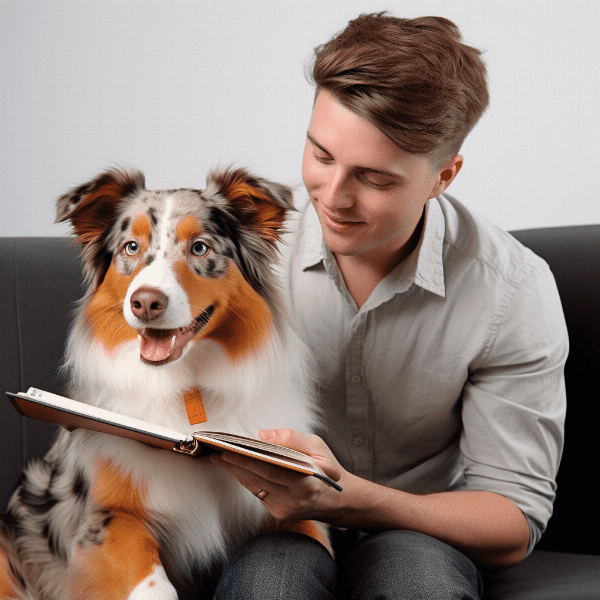
Positive Reinforcement Training Techniques for Australian Shepherds
Positive reinforcement training is a widely recognized and effective approach to managing aggressive behavior in Australian Shepherds. Here are some positive reinforcement training techniques that can help reduce aggression in Australian Shepherds.
Reward Good Behavior
Rewarding good behavior is an essential component of positive reinforcement training. This could include treats, praise, or playtime, and should be given immediately after the desired behavior is displayed. By reinforcing good behavior, Australian Shepherds will be more likely to repeat it in the future.
Ignore Negative Behavior
Ignoring negative behavior can be just as important as rewarding good behavior. Negative behavior should not be reinforced with attention, as this can encourage the behavior to continue. Instead, owners should redirect the dog’s attention to a positive behavior or simply ignore the negative behavior.
Use Clicker Training
Clicker training is a positive reinforcement training technique that can be highly effective with Australian Shepherds. The clicker is used as a marker to signal to the dog that they have performed the desired behavior. This is then followed by a reward, such as a treat or praise.
Desensitization and Counterconditioning
Desensitization and counterconditioning are techniques used to help Australian Shepherds overcome their fear or anxiety of certain triggers. This involves gradually exposing the dog to the trigger in a controlled environment while providing positive reinforcement and rewards for good behavior.
Conclusion
In conclusion, positive reinforcement training can be an effective way to manage aggressive behavior in Australian Shepherds. By rewarding good behavior, ignoring negative behavior, using clicker training, desensitization and counterconditioning, and maintaining consistency, owners can help their Australian Shepherds overcome their aggressive behavior and live happy and healthy lives.
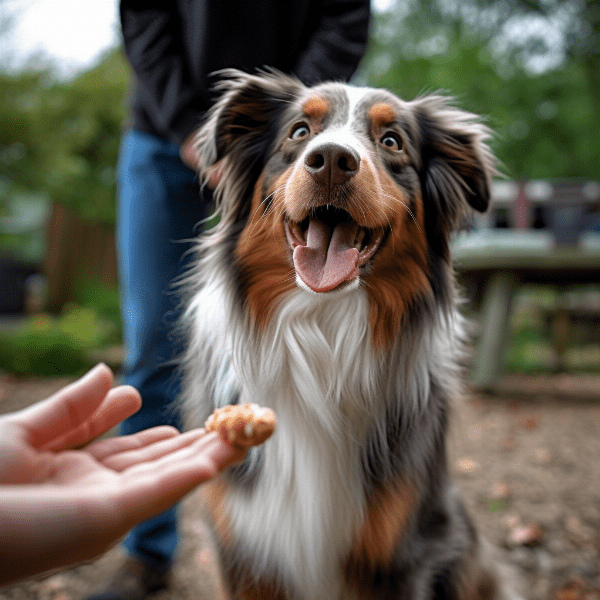
Seeking Professional Help for Aggressive Australian Shepherds
In some cases, managing aggressive behavior in Australian Shepherds may require the help of a professional. Here are some reasons why owners should consider seeking professional help for their aggressive Australian Shepherds.
Understanding the Underlying Causes
A professional, such as a veterinarian or animal behaviorist, can help owners understand the underlying causes of their Australian Shepherd’s aggressive behavior. This could involve assessing the dog’s medical history, genetics, environment, and training history to develop a customized plan for managing the behavior.
Developing a Customized Training Plan
A professional can also develop a customized training plan for managing aggressive behavior in Australian Shepherds. This could involve implementing specific training techniques, such as desensitization and counterconditioning or clicker training, to help the dog overcome their anxiety and aggression.
Medication Management
In some cases, medication may be necessary to manage aggressive behavior in Australian Shepherds. A veterinarian can evaluate the dog’s medical history and symptoms and recommend appropriate medication, such as antidepressants or antianxiety medications, to help manage the behavior.
Ensuring Safety
Aggressive behavior in Australian Shepherds can be dangerous for both the dog and those around them. Seeking professional help can help to ensure the safety of everyone involved, as professionals can provide guidance on managing the behavior and preventing potential incidents.
Conclusion
In conclusion, seeking professional help for aggressive Australian Shepherds is an important step in managing and preventing aggressive behavior. By understanding the underlying causes, developing a customized training plan, managing medication, and ensuring safety, owners can help their Australian Shepherds overcome their aggressive behavior and live happy and healthy lives.

Socializing Australian Shepherds to Reduce Aggression
Gradual Exposure
It is important to expose Australian Shepherds to new people and animals gradually, in a controlled environment. This can help to prevent the dog from becoming overwhelmed or anxious, which can lead to aggressive behavior.
Dog Parks and Playdates
Dog parks and playdates can be a great way to socialize Australian Shepherds. However, owners should be cautious and only bring their dogs to parks or playdates with dogs that they know and trust.
Conclusion
In conclusion, socializing Australian Shepherds is an important aspect of managing aggressive behavior. By starting early, using positive reinforcement, gradual exposure, consistency, dog parks and playdates, and seeking professional help when necessary, owners can help their Australian Shepherds overcome their anxiety and aggression and live happy and healthy lives.
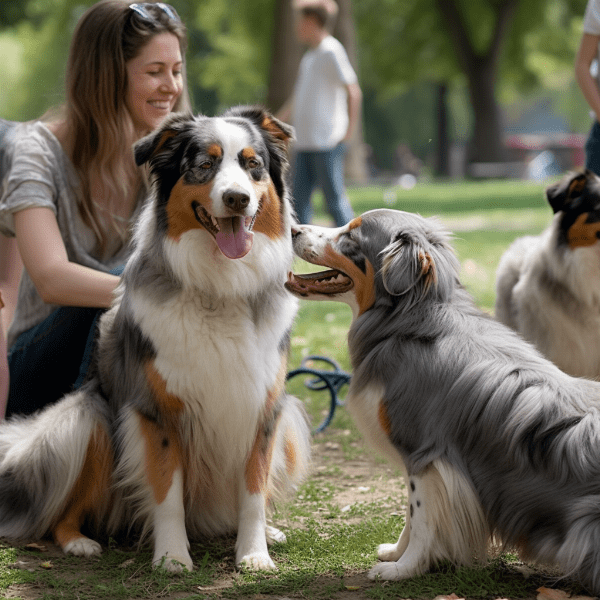
Creating a Safe Environment for Aggressive Australian Shepherds
Identify Triggers
The first step in creating a safe environment is to identify the triggers that may be causing the dog’s aggressive behavior. This could include certain people, animals, or situations that make the dog feel threatened or uncomfortable.
Remove Triggers
Once triggers have been identified, it is important to remove them from the dog’s environment as much as possible. This could involve limiting the dog’s exposure to certain people or animals, or avoiding certain situations that may cause the dog to become anxious or aggressive.
Provide a Safe Space
Providing a safe space for the dog can help to reduce their anxiety and prevent aggressive behavior. This could involve giving the dog their own space to retreat to, such as a crate or designated room, where they can feel safe and secure.
Use Caution with Strangers
Australian Shepherds can be protective of their owners and their territory, so it is important to use caution when introducing the dog to strangers. Introductions should be made slowly, in a controlled environment, and with close supervision.
Conclusion
In conclusion, creating a safe environment is an important aspect of managing aggressive behavior in Australian Shepherds. By identifying triggers, removing them from the dog’s environment, providing a safe space, avoiding punishment, using caution with strangers, and seeking professional help when necessary, owners can help their Australian Shepherds overcome their anxiety and aggression and live happy and healthy lives.
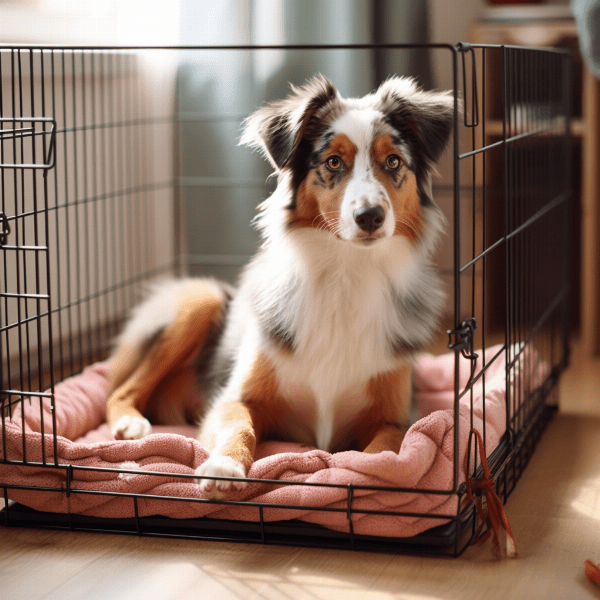
Providing Adequate Exercise and Mental Stimulation for Australian Shepherds
Providing adequate exercise and mental stimulation is important for managing aggressive behavior in Australian Shepherds. Here are some tips for providing enough exercise and mental stimulation for Australian Shepherds.
Regular Exercise
Australian Shepherds are high-energy dogs and require regular exercise to prevent boredom and reduce their anxiety and aggression. This could include daily walks, runs, or hikes, as well as opportunities for playtime and interactive games.
Mental Stimulation
Mental stimulation is just as important as physical exercise for Australian Shepherds. This could include puzzle toys, scent games, obedience training, and other mentally stimulating activities to keep the dog’s mind engaged and prevent boredom.
Interactive Games
Interactive games, such as fetch or tug-of-war, can be a great way to provide both physical exercise and mental stimulation for Australian Shepherds. These games can also help to strengthen the bond between the dog and their owner.
Enriched Environment
Providing an enriched environment can help to prevent boredom and reduce anxiety and aggression in Australian Shepherds. This could involve providing a variety of toys and activities, as well as changing up the dog’s environment regularly to keep them engaged.
Conclusion
In conclusion, providing adequate exercise and mental stimulation is important for managing aggressive behavior in Australian Shepherds. By providing regular exercise, mental stimulation, consistency, interactive games, and an enriched environment, owners can help their Australian Shepherds live happy and healthy lives.

Preventing Aggression in Australian Shepherds through Early Training
Early training is an important aspect of preventing aggression in Australian Shepherds. Here are some tips for preventing aggression through early training.
Socialization
Socialization is crucial for preventing aggression in Australian Shepherds. Puppies should be exposed to a variety of people, animals, and situations from a young age to help them develop positive associations and reduce their anxiety and aggression.
Obedience Training
Obedience training can help to prevent aggression in Australian Shepherds by teaching them basic commands and reinforcing positive behavior. This can also help to strengthen the bond between the dog and their owner.
Positive Reinforcement
Positive reinforcement training techniques, such as treats and praise, can be effective in preventing aggression in Australian Shepherds. Rewarding the dog for positive interactions with people and other animals can help to reinforce good behavior and reduce aggression.
Avoiding Punishment
Punishment is not an effective way to prevent aggression in Australian Shepherds. Instead, owners should focus on positive reinforcement training and redirecting the dog’s attention to positive behaviors.
Consistency is key when it comes to early training for Australian Shepherds. Owners should establish a regular routine and consistently reinforce positive behavior while ignoring negative behavior.
Seek Professional Help
In some cases, preventing aggression in Australian Shepherds may require the help of a professional. A veterinarian or animal behaviorist can provide guidance and support to owners, as well as develop a customized training plan to address the specific needs of the dog.
Conclusion
In conclusion, preventing aggression in Australian Shepherds through early training is crucial for ensuring the dog’s well-being and the safety of those around them. By socializing the dog, providing obedience training, using positive reinforcement, avoiding punishment, maintaining consistency, and seeking professional help when necessary, owners can help their Australian Shepherds live happy and healthy lives.
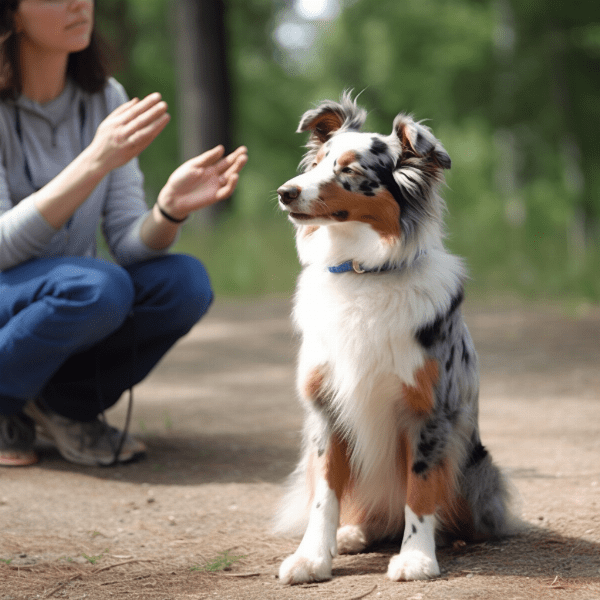
The Importance of Consistency in Dealing with Aggressive Australian Shepherds
Consistency is crucial when it comes to managing aggressive behavior in Australian Shepherds. Here are some reasons why consistency is important and some tips for maintaining consistency.
Reinforcing Positive Behavior
Consistency is important for reinforcing positive behavior in Australian Shepherds. By consistently rewarding positive behavior and ignoring negative behavior, owners can help to reinforce good behavior and reduce aggression.
Establishing Boundaries
Consistency is also important for establishing clear boundaries for the dog. This could include rules about where the dog is allowed to go, what they are allowed to chew, and how they are allowed to interact with people and other animals.
Preventing Confusion
Inconsistent training can lead to confusion in Australian Shepherds, which can in turn lead to anxiety and aggression. By maintaining consistency in training and expectations, owners can help to prevent confusion and reduce the likelihood of aggressive behavior.
Avoiding Mixed Signals
Mixed signals can also lead to confusion in Australian Shepherds. Owners should ensure that they are sending clear, consistent signals to the dog, both through their verbal commands and their body language.
Seeking Professional Help
If owners are struggling to maintain consistency in dealing with their aggressive Australian Shepherd, seeking professional help may be necessary. A veterinarian or animal behaviorist can provide guidance and support to ensure that consistency is maintained in training and managing the dog’s behavior.
Conclusion
In conclusion, consistency is essential for managing aggressive behavior in Australian Shepherds. By reinforcing positive behavior, establishing clear boundaries, preventing confusion and mixed signals, and seeking professional help when necessary, owners can help their Australian Shepherds overcome their aggression and live happy and healthy lives.
